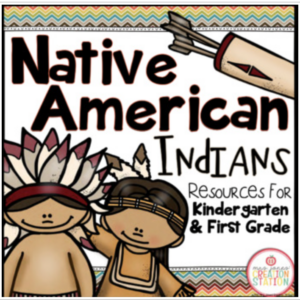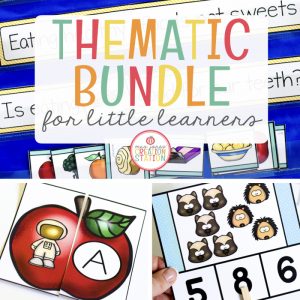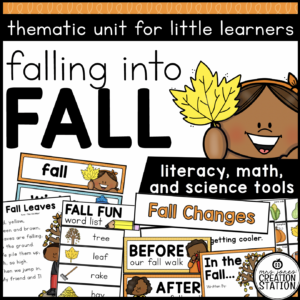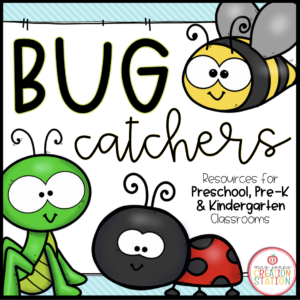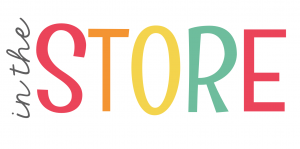Spring Science Activities
Welcome Spring with these engaging and comprehensive spring science activities designed specifically for Pre-K and Kindergarten learners.
These spring science activities provide a dynamic blend of whole group science lessons and literacy activities to celebrate a new season and the changes we see.
Buy the BUNDLE and SAVE! You can purchase this resources in the Thematic Activities for Little Learners Bundle and the Little Learners Mega-Bundle!
What’s Included:
- Whole Group Lessons: Take a look at all the amazing changes we see as Spring approaches. This unit includes five whole group lessons. Go on a Spring walk and chart what you see, hear and smell. Discuss and sort living and non-living things as well as basic needs for living things to survive.
- Suggested Reading List: An amazing list of Spring themed picture books that help introduce the whole group lessons.
- Thematic Reader: Spark a love for reading and enhance literacy skills with our thematic reader focused on fun things to do in the Spring. Through simple sentences and illustrations, students will focus on fluency and word recognition skills.
- Interactive Poem: Foster creativity and language development with our interactive poem centered around Spring. Students will participate in reciting and acting out the poem, reinforcing vocabulary related to all things about Spring.
- Math and Literacy Centers: Reinforce key math and literacy concepts with our engaging centers tailored to the theme of spring. From number order and addition activities to final sounds and sight word practice, these centers provide hands-on learning experiences that support academic growth and development.
Benefits:
1. Comprehensive Learning Experience: The unit provides a well-rounded approach to science education, covering various aspects of the spring season, from living and non-living things to seasonal changes.
2. Promotion of Curiosity and Inquiry: By digging into the subject of Spring, the unit sparks curiosity and encourages inquiry-based learning. Students are motivated to ask questions, make observations, and seek answers, fostering a sense of wonder and exploration in the classroom.
3. Development of Scientific Literacy: Through exposure to age-appropriate science content and vocabulary, students develop scientific literacy from an early age. By engaging with science concepts in context, they build a foundation for future learning and develop the skills necessary to navigate the world around them.
Check out these related resources:
Insects and Bugs Thematic Unit
Insects and Bugs Lapbook
Seasons Science Lapbook
LEARNING STANDARDS INCLUDED IN THIS RESOURCE
Common Core Standards
Language Arts
CCSSCCRA.W.2
Write informative/explanatory texts to examine and convey complex ideas and information clearly and accurately through the effective selection, organization, and analysis of content.
CCSSL.K.1a
Print many upper- and lowercase letters.
CCSSL.K.2d
Spell simple words phonetically, drawing on knowledge of sound-letter relationships.
CCSSRF.K.1d
Recognize and name all upper- and lowercase letters of the alphabet.
CCSSRF.K.2c
Blend and segment onsets and rimes of single-syllable spoken words.
CCSSRF.K.2d
Isolate and pronounce the initial, medial vowel, and final sounds (phonemes) in three-phoneme (consonant-vowel-consonant, or CVC) words. (This does not include CVCs ending with /l/, /r/, or /x/.)
CCSSRI.K.8
With prompting and support, identify the reasons an author gives to support points in a text.
CCSSRL.K.7
With prompting and support, describe the relationship between illustrations and the story in which they appear (e.g., what moment in a story an illustration depicts).
CCSSSL.K.5
Add drawings or other visual displays to descriptions as desired to provide additional detail.
Math
CCSSK.CC.A.3
Write numbers from 0 to 20. Represent a number of objects with a written numeral 0-20 (with 0 representing a count of no objects).
CCSSK.CC.B.4
Understand the relationship between numbers and quantities; connect counting to cardinality.
CCSSK.CC.B.4b
Understand that the last number name said tells the number of objects counted. The number of objects is the same regardless of their arrangement or the order in which they were counted.
CCSSK.G.A.2
Correctly name shapes regardless of their orientations or overall size.
Texas Essential of Knowledge and Skills
Language Arts
TEKSLA.K.2.A.vii
Developing and sustaining foundational language skills: listening, speaking, reading, writing, and thinking–beginning reading and writing…The student expects to: demonstrate phonological awareness by: blending spoken onsets and rimes to form simple words.
TEKSLA.K.2.A.viii
Developing and sustaining foundational language skills: listening, speaking, reading, writing, and thinking–beginning reading and writing…The student expects to: demonstrate phonological awareness by: blending spoken phonemes to form one-syllable words.
TEKSLA.K.2.C.i
Developing and sustaining foundational language skills: listening, speaking, reading, writing, and thinking–beginning reading and writing…The student expects to: demonstrate and apply spelling knowledge by: spelling words with VC, CVC, and CCVC.
TEKSLA.K.2.D.v
Developing and sustaining foundational language skills: listening, speaking, reading, writing, and thinking–beginning reading and writing…The student expects to: demonstrate print awareness by: identifying all uppercase and lowercase letters.
TEKSLA.K.5.B
Comprehension skills: listening, speaking, reading, writing, and thinking using multiple texts… The student is expects: generate questions about text before, during, and after reading to deepen understanding and gain information with adult assistance.
TEKSLA.K.5.C
Comprehension skills: listening, speaking, reading, writing, and thinking using multiple texts…The student expects to: make and confirm predictions using text features and structures with adult assistance.
TEKSLA.K.5.E
Comprehension skills: listening, speaking, reading, writing, and thinking using multiple texts…The student expects to: make connections to personal experiences, ideas in other texts, and society with adult assistance.
TEKSLA.K.11.B
Composition: listening, speaking, reading, writing, and thinking using multiple texts–genres. The student uses genre characteristics and craft to compose multiple texts that are meaningful. The student expects to: dictate or compose informational texts.
Science
TEKSSCI.K.2.A
Scientific investigation and reasoning. The student develops abilities to ask questions and seek answers in classroom and outdoor investigations. The student expects to: ask questions about organisms, objects, and events observed in the natural world.
TEKSSCI.K.2.C
Scientific investigation and reasoning. The student develops abilities to ask questions and seek answers in classroom and outdoor investigations. The student expects to: collect data and make observations using simple tools.
TEKSSCI.K.3.B
Scientific investigation and reasoning. The student knows that information and critical thinking are used in scientific problem solving. The student expects to: make predictions based on observable patterns in nature.
TEKSSCI.K.8.A
Earth and space. The student knows that there are recognizable patterns in the natural world and among objects in the sky. The student expects to: observe and describe weather changes from day to day and over seasons.
TEKSSCI.K.8.B
Earth and space. The student knows that there are recognizable patterns in the natural world and among objects in the sky. The student expects to: identify events that have repeating patterns, including seasons of the year and day and night.
Math
TEKSMA.K.2.B
Number and operations. The student applies mathematical process standards to understand how to represent and compare whole numbers, the relative position and magnitude of whole numbers, and relationships within the numeration system. The student expects to: read, write, and represent whole numbers from 0 to at least 20 with and without objects or pictures.
TEKSMA.K.2.C
Number and operations. The student applies mathematical process standards to understand how to represent and compare whole numbers, the relative position and magnitude of whole numbers, and relationships within the numeration system. The student expects to: count a set of objects up to at least 20 and demonstrate that the last number said tells the number of objects in the set regardless of their arrangement or order.
TEKSMA.K.6.A
Geometry and measurement. The student applies mathematical process standards to analyze attributes of two-dimensional shapes and three-dimensional solids to develop generalizations about their properties. The student expects to: identify two-dimensional shapes, including circles, triangles, rectangles, and squares as special rectangles.
CONNECT WITH MJCS
WEBSITE | FACEBOOK | INSTAGRAM | PINTEREST | TEACHERS PAY TEACHERS
© Mrs. Jones’ Creation Station, Inc
